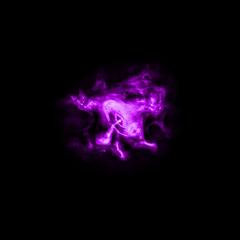URL: https://www.desy.de/news/news_search/index_eng.html
Breadcrumb Navigation
DESY News: 6. International Cosmic Day
News
News from the DESY research centre
6. International Cosmic Day
For the 6th International Cosmic Day, teenagers around the world gathered on Thursday to explore messenger particles from the universe. The students will investigate cosmic rays, subatomic particles from the cosmos, which fly through us unnoticed, discuss their results with scientists and work like an international collaboration in science. Institutions of research worldwide open their houses and get together to offer the young people an exciting day in research of astroparticle physics. The event was initiated by the Deutsches Elektronen-Synchrotron DESY in cooperation with Netzwerk Teilchenwelt in Germany and the research center Fermilab with its teachers' network QuarkNet in the US.
The field of astroparticle physics is a relatively young field of research, which has developed rapidly for several years. International collaborations and new technologies provide deeper insight into the Universe in which we live. Large observatories are being built to detect the smallest particles that flow through the cosmos. These cosmic particles provide necessary information to gain insight into the tremendous processes in our universe. Modern astroparticle physics aims to find explanations for phenomena that have eluded scientists for many years."Our research benefits from a multitude of personalities and nationalities with different cultures and education. Together we explore our universe every day. It's great that more than 100 groups of young people in 20 countries around the world can experience this for themselves on International Cosmic Day," explains Christian Stegmann, head of the DESY site in Zeuthen. From Bolivia to China, Denmark to Ethiopia, groups registered for this year’s International Cosmic Day.
Even if we do not perceive them, the messengers from the universe are constantly flying through us. They are generated when particles from outer space hit the Earth’s atmosphere and produce a shower of new particles. Some of these new particles are muons, which rarely interact and and have a sufficiently long life such that they can reach the ground.
With detectors that are specifically designed for high school students, young researches get the chance to detect cosmic rays themselves. With the mostly laptop-sized detectors, the International Cosmic Day examines which direction most muons are coming from. Do we get the same number of muons from all directions, or is there a preferred direction? Scientists and trained teachers support the young people in planning, implementing and evaluating the data obtained. The young people are then able to share their findings in a video conference with the other participants worldwide. This joint analysis, comparison and discussion shows the students how international cooperation can be achieved and how science functions as a connecting element across national boundaries, language barriers and cultural differences.
"Every year, it is remarkable how quickly young people take up the idea of research and exchange their ideas in the video conference with enthusiasm, openness and criticism," explains Carolin Schwerdt, coordinator of the astroparticle projects for young people at DESY and in Netzwerk Teilchenwelt.
But also data from the research should not be missing on the day. The international research experiments ATLAS and IceCube evaluate their measurements for the International Cosmic Day and present the results to the young participants. "The International Cosmic Day offers young people the opportunity to both record and analyze their own data and to gain insight into the measurement tools of the major experiments worldwide. This participation is an essential building block in understanding how science works," affirms Michael Kobel, head of Netzwerk Teilchenwelt at TU Dresden.
ATLAS is a particle detector at the particle accelerator Large Hadron Collider LHC at CERN. In the LHC, protons are accelerated to high energies and collided in ATLAS. Just as it happens in nature every second, when a cosmic particle hits an atomic nucleus of the atmosphere, many new particles are generated during the collision in the detector. ATLAS can precisely detect their traces. By analyzing many collisions, the researchers are able to investigate the fundamental processes and forces of nature. If particles are not accelerated in the LHC, ATLAS can nevertheless measure particles. When the detector is switched on, only the cosmic muons leave their traces.
IceCube at the South Pole is looking for high-energy neutrinos coming from the universe and whose origin are exploding stars, gamma ray bursts and other sources. These neutrinos are detected indirectly by muons, which occur when a neutrino interacts in the detector. An important task is to distinguish these muons from those from the atmosphere. Even if both experiments have different research priorities, they measure the cosmic muons and can contribute to the investigations and discussions on the International Cosmic Day.
International Cosmic Day: https://icd.desy.de




